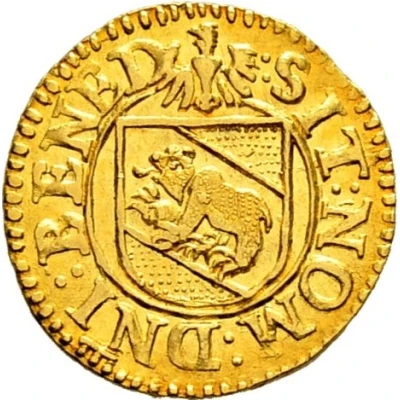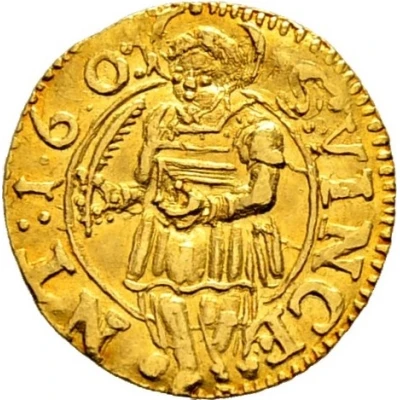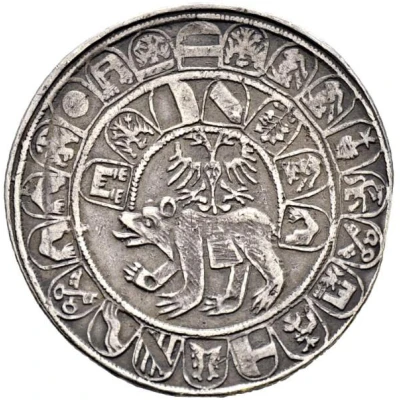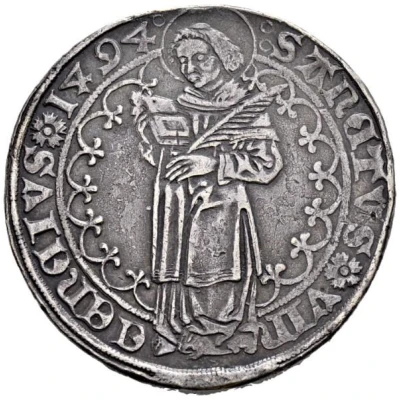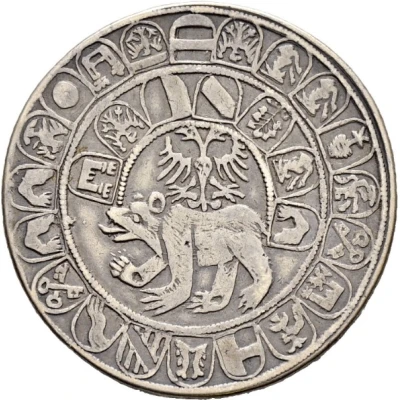
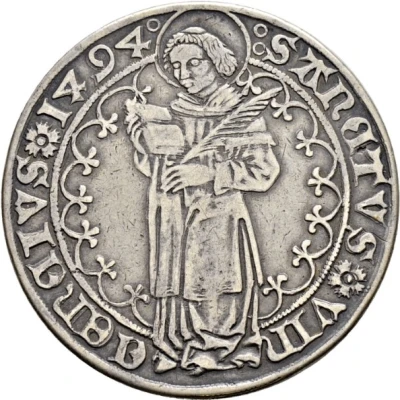

© Sincona AG
Guldiner
| Silver | 29 g | - |
| Issuer | City of Bern |
|---|---|
| Period | Free imperial city (1353-1648) |
| Type | Standard circulation coin |
| Years | 1493-1501 |
| Value | 1 Guldiner |
| Currency | Guldiner (1492-1601) |
| Composition | Silver |
| Weight | 29 g |
| Shape | Round (irregular) |
| Technique | Hammered |
| Demonetized | Yes |
| Updated | 2024-10-07 |
| Numista | N#101467 |
|---|---|
| Rarity index | 97% |
Reverse
Full-length figure of Saint Vincent of Saragossa holding quill and Gospels. Polylobe around.
Script: Latin (uncial)
Lettering: ⵓ SANCTVS 🏵 VIN CENCIVS 🏵 1494 ᐤ
Lettering (regular font): ⵓ SANCTVS 🏵 VIN CENCIVS 🏵 1494 ᐤ
Comment
Examples of varieties of this type:• Variety 1493:
Reverse: ᐤ SANCTVS 🏵 VIN CENCIVS 🏵 1493
• Example #1.1 (29.25g, Very Fine - Extremely Fine):
© Image courtesy of SINCONA AG:
◦ Auctioned by SINCONA AG, Auction 30, 20 May 2016, Lot 3509. Sold for 7,500 CHF.
• Variety 1494:
Reverse: ⵓ SANCTVS 🏵 VIN CENCIVS 🏵 1494 ᐤ
• Example #2.1 (28.80g, Good Very Fine):
© Image courtesy of SINCONA AG:
◦ Auctioned by SINCONA AG, Auction 30, 20 May 2016, Lot 3511. Sold for 4,200 CHF.
• Variety 1501 #1:
Reverse: SANCTVS ✽ VIN CENCIVS ✽ 1501
• Example #3.1 (30.46g, Almost Extremely Fine):
© Image courtesy of SINCONA AG:
◦ Auctioned by SINCONA AG, Auction 30, 20 May 2016, Lot 3516. Sold for 7,500 CHF.
• Variety 1501 #2:
Reverse: ᐤ SANCTVS ✽ VIN CIENCIVS ✽ 1501 ᐤ
• Example #4.1 (28.48g, Almost Extremely Fine):
© Image courtesy of SINCONA AG:
◦ Auctioned by SINCONA AG, Auction 30, 20 May 2016, Lot 3517. Sold for 4,250 CHF.
Interesting fact
The Guldiner coin from the City of Bern, produced between 1493 and 1501, is fascinating because it was used as a form of currency during a time when many European countries were transitioning from bartering to using coins as a medium of exchange. Its silver content and unique design made it a valuable and highly sought-after coin among merchants and traders. Additionally, the fact that it was produced in the city of Bern, which was an important trading hub during the Renaissance period, adds to its historical significance.
